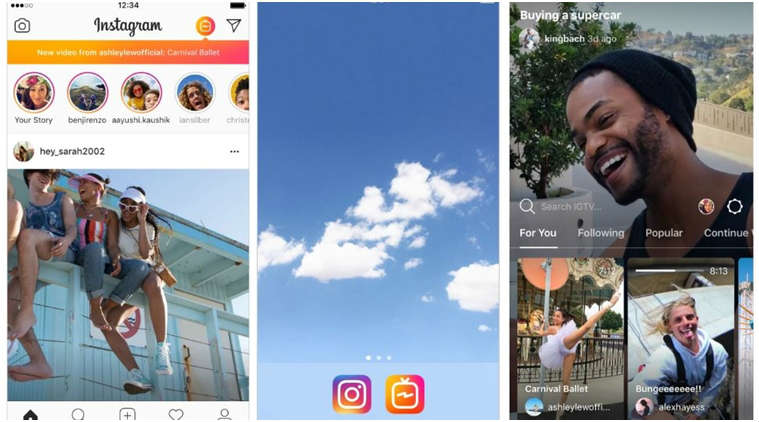 IGTV will perhaps be the biggest threat to YouTube in recent times. One reason is due to the sheer scale of Instagram, which is now at 1 billion monthly active users.
IGTV will perhaps be the biggest threat to YouTube in recent times. One reason is due to the sheer scale of Instagram, which is now at 1 billion monthly active users.
Instagram is going big on video and has launched its IGTV app, where content creators and influencers can now post longer videos. After destroying Snapchat with its own Stories, Instagram is setting sights on YouTube with a push towards longer video formats. If you are an avid Instagram user, following some of the biggest influencers on the ‘gram’, you might have noticed that most of them went live on the IGTV platform with a video.
There are some key things to keep in mind. Unlike YouTube, on IGTV, videos are vertical and not horizontal, so you do not have to tilt your smartphone’s display. The ‘vertical’ video format went mainstream thanks to Snapchat, but Instagram with its 1 billion followers is now clearly dominating this, and plans to go further.
IGTV videos can be an hour long, and are no longer have time limits like regular Stories or users’ video posts. Longer videos means more time spent on Instagram, and from a revenue perspective that’s exactly what any app wants to achieve.
IGTV will perhaps be the biggest threat to YouTube in recent times. One reason is due to the sheer scale of Instagram, which is now at 1 billion monthly active users, a size that can pose a challenge to YouTube. The Google-owned video service has close to 1.9 billion monthly viewers, an increase from 1.5 billion last year. YouTube is presently double the size of Instagram, at least in terms of users, but the Facebook-owned property has seeing tremendous growth and the focus on video will also raise challenges for YouTube’s advertising. For Instagram, the longer video format will mean targeting more premium advertising.
The influencer factor
The other aspect of YouTube that Instagram will challenge is its influencer community, though this won’t be easy. Many influencers might have grown on YouTube, but now have dedicated Instagram pages with millions of followers. Most have also switched to Insta Stories for more views despite the terrible filters, especially after Snapchat’s disastrous redesign which did not go down well with users and influencers alike.
 IGTV videos can be an hour long, and are no longer have time limits like regular Stories or users’ video posts.
IGTV videos can be an hour long, and are no longer have time limits like regular Stories or users’ video posts.
For many of these influencers, IGTV with its longer videos is another opportunity at higher revenues, whether through paid partnerships or traditional ads in videos. However, it is not clear whether Instagram will be paying the content creators for what they create on IGTV. This will perhaps be crucial, especially when comes to keeping the fickle influencer community on board. YouTube, despite all the memes and jokes about revenue sharing for creators, is the reason why many have successful careers.
YouTube pays content creators via a revenue share and the company claims there are many earning $10,000 per month, while some of the biggest YouTubers are earning $100,000 per month. It also claims the number of content creators with growing incomes is increasing. This kind of income is something IGTV will not be able to replicate in a day, so many may not be so keen to abandon YouTube.
For Instagram and IGTV, success will depend on luring these content creators. Instagram will have to make sure it can offer something as lucrative as YouTube in the fight for survival. Otherwise, YouTube will still remain a content creator’s top priority.